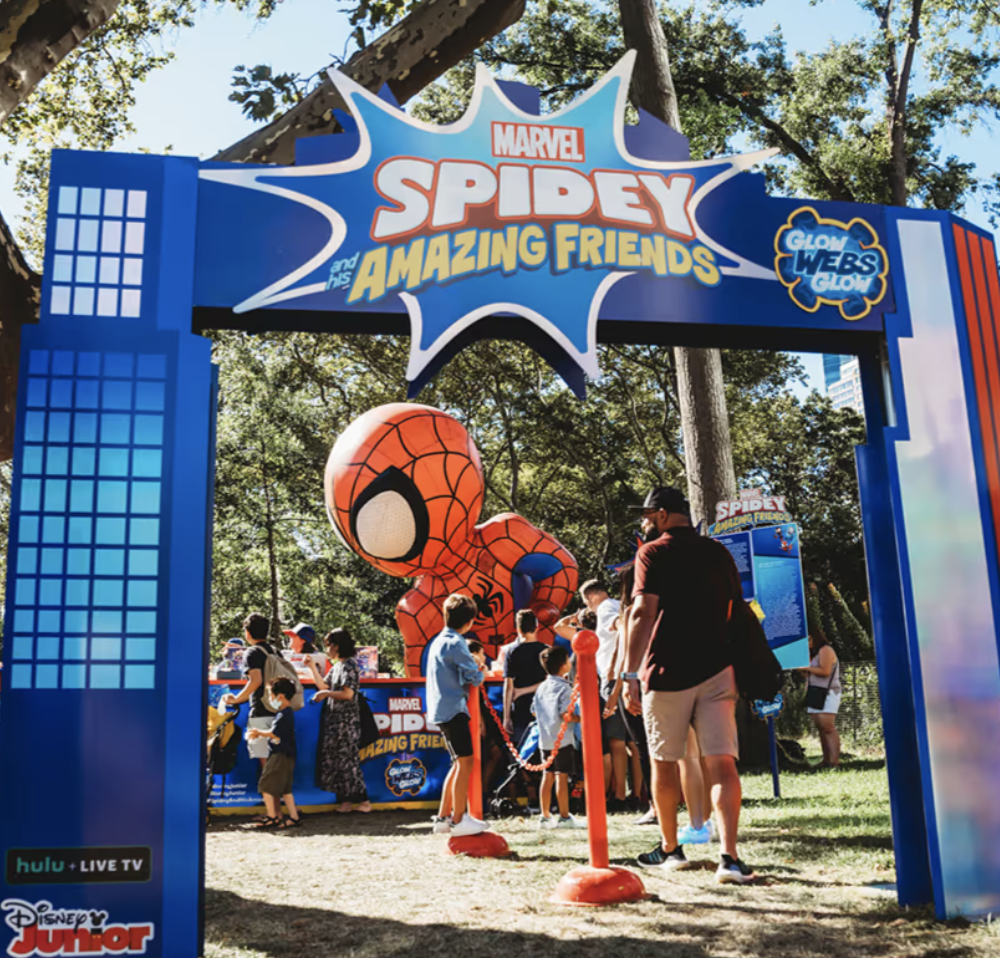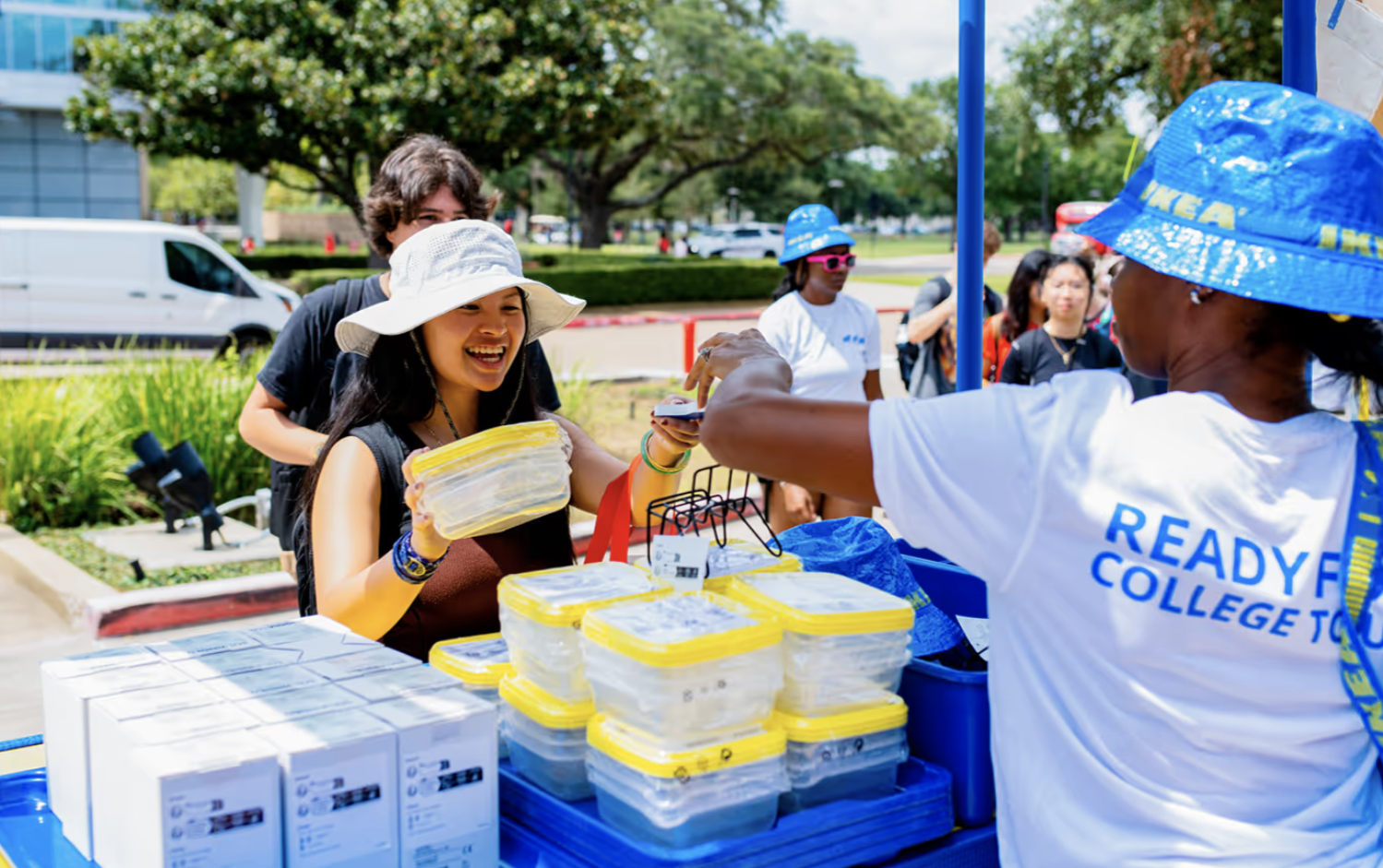Experience-Driven Brand Content: Converting Audiences Into Advocates
Traditional advertising interrupts consumers who actively avoid promotional messages through ad blockers, streaming services, and social media algorithms. Experience-driven brand content uses physical activations, mobile programs, and premium campaigns to generate authentic connections that drive revenue and brand loyalty.
Consumers remember participating in brand experiences longer than viewing advertisements because active involvement creates stronger mental associations. When people touch products, customize experiences, or share moments with friends during brand activations, they develop emotional attachments that influence future purchasing decisions and encourage organic word-of-mouth promotion to their personal networks.
What is Experience-Driven Marketing?
Experience-driven content marketing creates brand interactions where consumers participate rather than watch. Mobile tours, pop-up installations, and premium gifting programs turn audiences into active participants who engage with products and brand stories through personalized experiences. These physical touchpoints replace traditional advertising to create memories. Brands see stronger customer loyalty when people remember participating in experiences rather than viewing advertisements.
Why Brands Choose Activations Over Advertising
Consumers block ads, skip commercials, and ignore promotional emails because interruption-based marketing feels invasive. Experiential activations offer participation over forced messaging:
- Mobile Tours: Branded vehicles travel to target audiences with interactive product demonstrations and sampling opportunities
- Pop-Up Installations: Temporary branded environments create immersive experiences in high-traffic locations
- Custom Events: Tailored activations designed for specific audience segments and business objectives
- Premium Gifting: Curated packages delivered directly to recipients with personalized brand experiences
Marketing budgets stretch further when scaling experiential campaigns because shared resources like custom fabrication, staffing systems, and logistics infrastructure reduce per-event costs across multiple markets.
Brand Experience Strategy Influences Purchase Decisions
Experiential activations create stronger brand connections than traditional advertising because people remember participating longer than viewing. Mobile tours, pop-ups, and custom installations require time investment from participants, building emotional attachment that influences future buying decisions. Interactive formats work better for complex products that benefit from demonstration or education. When people touch, test, or customize products during brand experiences, they develop purchase confidence that static advertising cannot replicate.
Experiential Content Development Methods
Brand activations balance creative storytelling with operational execution across mobile tours, pop-up installations, and premium gifting campaigns. Projects require coordination of fabrication, logistics, staffing, and technology integration to deliver experiences that engage audiences while meeting business objectives:
Storytelling Through Brand Environments
Pop-up installations and mobile tours tell brand stories through hands-on participation rather than passive observation. Activations use multiple storytelling methods to engage different audience types:
- Themed Environments: Physical spaces designed around brand narratives where visitors become part of the story
- Interactive Stations: Hands-on activities that let participants experience brand values through direct engagement
- Product Customization: Personalization opportunities that connect individual preferences with brand identity
- Corporate Installations: Professional environments that communicate company vision through participatory design elements
Brand activations reach broader audiences through inclusive experiential marketing strategies that welcome participants with different backgrounds, abilities, and preferences into memorable brand interactions.
Personalization and Targeting for Enhanced User Experience
Premium PR campaigns acknowledge individual recipient preferences through custom product selection, personalized messaging, and tailored packaging that reflects specific interests or achievements. These campaigns create memorable unboxing moments, encouraging social sharing while introducing new products or reinforcing existing brand relationships.
Tiered activation programs offer different customer experience levels based on customer status, purchase history, or engagement frequency. Mobile tours and pop-up installations can adapt experiences in real-time through data collection, on-site customization services, and interactive stations that capture preferences for future brand communications.
Interactive Content Formats and Digital Experience Platforms
Activations engage participants through hands-on product demonstrations, customization stations, photo opportunities, and reward-based activities. People remember participating in great brand experiences longer than watching advertisements because involvement builds stronger mental associations:
- Photo Booths: Branded photography stations with props and backdrops that encourage social media sharing
- Lead Capture Apps: Digital forms that collect names, emails, and product preferences from event participants
- QR Code Integration: Digital connection points that link physical experiences to online content or exclusive offers
- Specialty Fabrication: One-of-a-kind installations with laser etching, 3D printing, and woodworking that competitors cannot replicate
Audience Research From Campaign Data
Brand activations are a goldmine for data collection because events gather customer journey feedback, track consumer behavior, and capture contact details for follow-up marketing efforts (Limelight Platform, 2018). Mobile tours, pop-up installations, and premium campaigns show how people interact with brands instead of what they claim they want through surveys that can encourage more candid answers, but won't get the same insight into body language, tone of voice, expressions, and other helpful information (SurveyMonkey, 2023).
Activation data shows which demographics engage most, what messaging drives participation, and which interactive elements convert browsers into buyers. This information shapes future campaign targeting and creative direction:
Live Event Data Collection Methods
Staff observe which product demonstrations draw crowds, what messaging prompts questions, and which interactive elements generate social media sharing during events:
- Attendance Tracking: Geographic and demographic data from event participation across different markets
- Dwell Time Analysis: How long visitors spend at different activation stations and product demonstrations
- Lead Collection: Contact information and preferences gathered at interactive stations and prize redemptions
- Social Media Monitoring: Hashtag usage, photo sharing, and online mentions generated during and after events
Building Personas From Activation Performance
Events use digital tools like surveys, mobile apps, or interactive kiosks to offer valuable insights into audience preferences and behaviors (Limelight Platform, 2018). Mobile tour attendance patterns show which locations and demographics respond to specific product categories, messaging approaches, and interactive formats. Corporate activation feedback differs from consumer responses, requiring separate analysis for B2B campaigns. Professional audiences prioritize efficiency, educational value, and networking opportunities over entertainment elements that appeal to consumer markets.
Examples of Experience-Driven Brand Campaigns
Through documented campaign performance, brand activations produce concrete outcomes across different industries and objectives. Mobile tours, pop-up installations, and corporate events deliver measurable engagement through attendance figures, sales data, and social media metrics. These campaigns showcase how experiential marketing converts audience participation into business outcomes across consumer, education, and corporate markets:
Disney: Mobile Entertainment Reaches Family Audiences
Disney's Spidey and His Amazing Friends activation brought animated characters into physical reality through custom mobile installations that traveled to NYC and LA markets. The campaign generated over 500,000 social media impressions by creating family experiences, encouraging sharing, and repeat visits. The activation featured custom obstacle courses, optical illusion photo opportunities, and life-sized toy recreations, allowing families to enter the animated series. Custom fabrication included branded vehicles, interactive technology, and detailed props that matched Disney's production standards while creating experiences families could not access elsewhere.
Using a mobile format eliminated barriers by bringing entertainment directly to target audiences in their preferred locations. Families participated in hands-on experiences that reinforced brand messaging about the new season launch while creating shareable content that extended campaign reach beyond physical attendance.

IKEA: Campus Sales With Mobile Showrooms
IKEA's college tour program drove direct revenue through on-site sales while building brand loyalty among students preparing dorm rooms. Custom-wrapped school buses brought furniture directly to campus environments where students lived and made purchasing decisions:
- Mobile Showrooms: Realistic dorm room setups inside buses where students could interact with furniture arrangements
- Point-of-Sale Systems: Integrated purchasing technology that enabled immediate sales during campus visits
- DIY Stations: Hands-on customization activities that extended brand interaction time beyond product demonstration
- Swedish Cultural Elements: Themed experiences that reinforced brand identity while differentiating from competitors

Rocket: Corporate Event Drives Employee Participation
Rocket Companies' internal activation engaged thousands of employees through a manifestation-themed experience that reinforced company values and future vision. The sports arena event featured manifestation recording stations where employees recorded personal and professional goals on video, prosperity gardens with client-sourced quotes about homeownership and financial success, and collaborative dream walls where employees wrote personal aspirations for colleagues to read. Five color-coded zones encouraged cross-departmental interaction while maintaining the manifestation theme throughout the arena space.

Activate: Your Partner in Experience-Driven Brand Content
Activate turns marketing budgets into memorable brand experiences through custom fabrication, mobile tours, and premium campaigns. We handle strategy, creative development, logistics, staffing, and measurement to deliver activations that engage audiences and drive business outcomes.
Our 75,000 sq. ft. facility enables custom installations, mobile vehicle modifications, and premium packaging that competitors cannot replicate. This integrated approach maintains quality control while scaling activations across multiple markets. Fill out our contact form to develop experience-driven brand content that converts marketing objectives into memorable customer journey experiences.
Frequently Asked Questions
What is experience-driven marketing?
Experience-driven marketing creates immersive brand interactions through physical activations, mobile tours, and premium gifting campaigns that engage consumers beyond traditional advertising methods. This approach transforms brand messaging into participatory experiences including pop-up installations, custom mobile activations, and luxury PR campaigns that generate emotional connections while delivering measurable business results.
How successful is experiential marketing?
Experiential marketing generates higher engagement rates and stronger brand recall compared to traditional advertising because consumers actively participate in brand experiences rather than passively consuming content. Mobile tours, brand activations, and premium experience campaigns create memorable touchpoints that drive social media sharing, direct sales conversion, and long-term brand loyalty through authentic consumer interactions.
Which industries benefit most from mobile tours?
Mobile tours work best for industries that need product demonstration, sampling, or hands-on education to drive purchase decisions. Technology companies, food and beverage brands, automotive manufacturers, and consumer goods companies see strong results because mobile formats allow potential customers to test products in familiar environments rather than retail locations.
Do premium gifting campaigns work for B2B companies?
Premium gifting campaigns drive stronger results in B2B markets than consumer campaigns because business recipients value quality materials and personalized touches that reflect professional relationships. Corporate gifting programs build deeper client relationships through curated experiences demonstrating attention to individual preferences while reinforcing brand positioning through packaging quality and product selection.
Sources:
- Limelight Platform. (2018, November 8). 15 Benefits of Experiential Marketing That Drive Success. Retrieved from https://www.limelightplatform.com/blog/benefits-experiential-events-marketing
- SurveyMonkey. (2023). Running Survey vs Focus Group Best Way to Collect Customer Reviews. Retrieved from https://www.surveymonkey.com/mp/running-survey-vs-focus-group-best-way-collect-customer-reviews/
